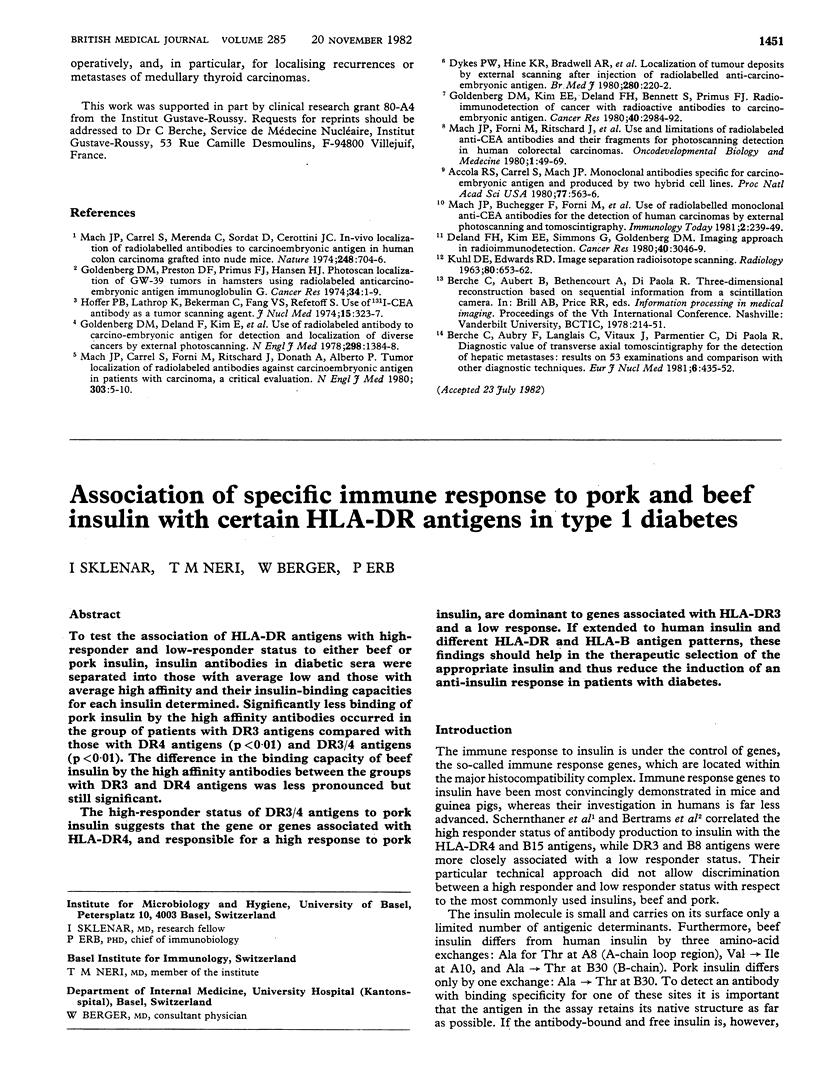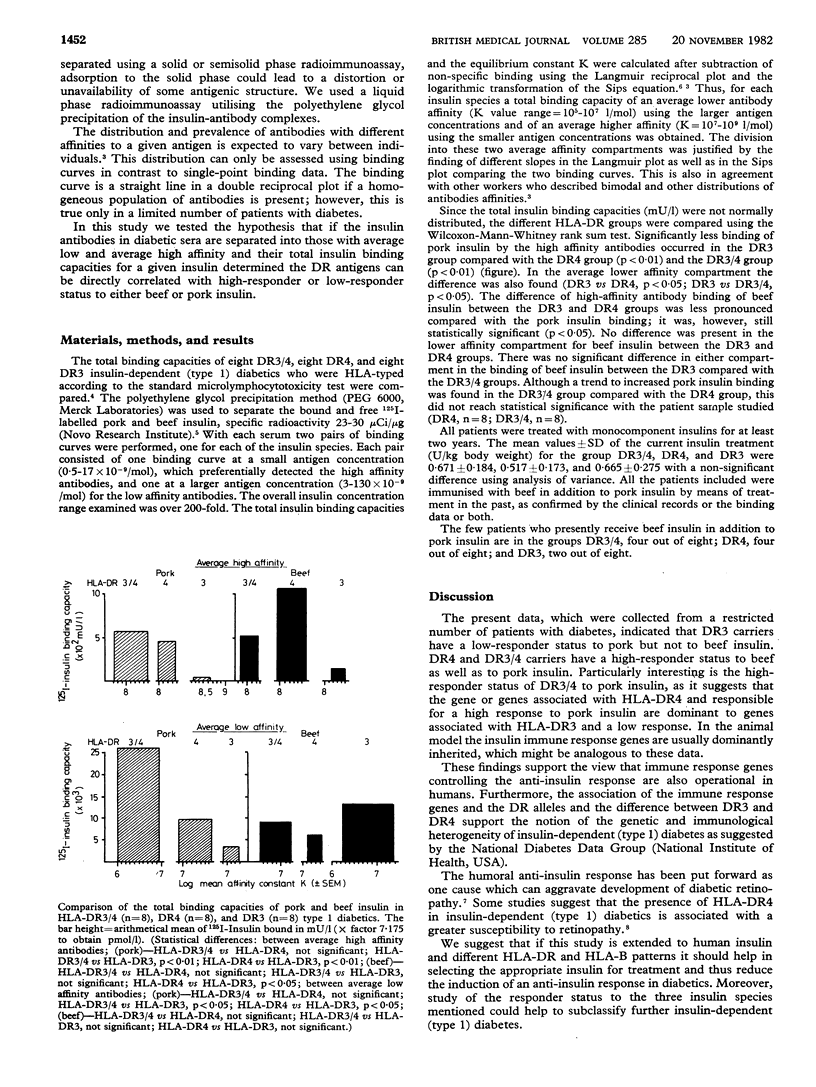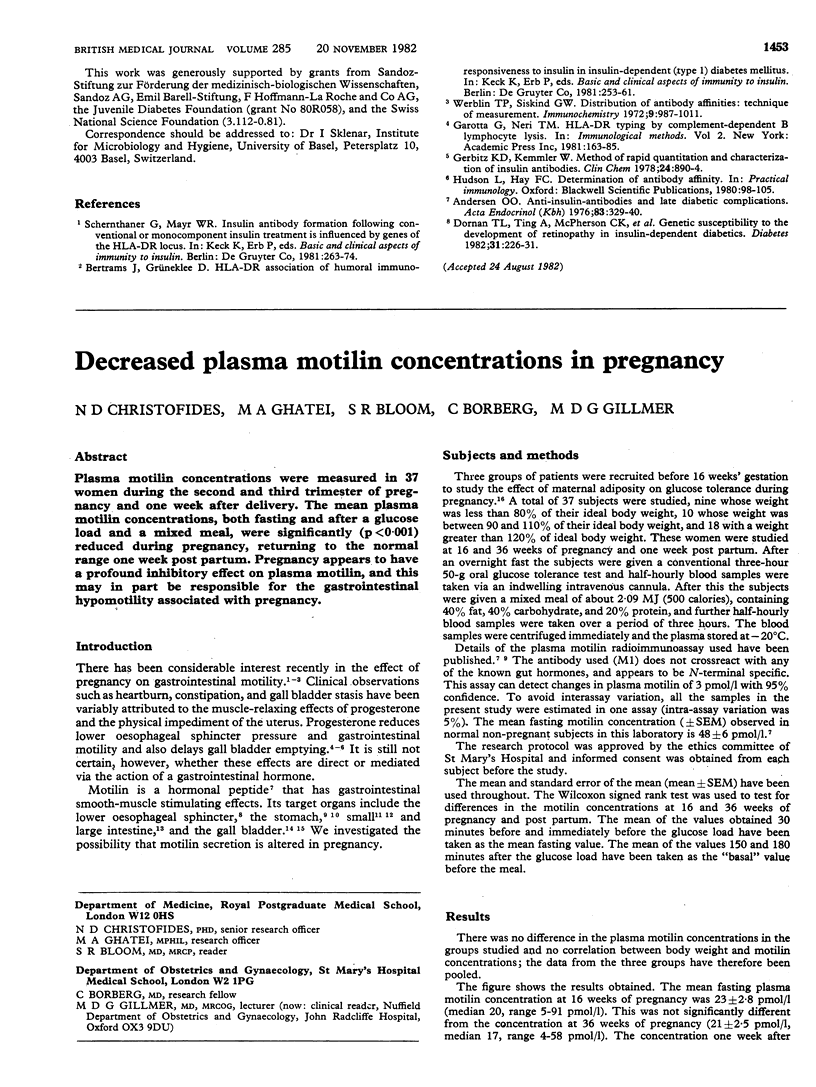Abstract
To test the association of HLA-DR antigens with high-responder and low-responder status to either beef or pork insulin, insulin antibodies in diabetic sera were separated into those with average low and those with average high affinity and their insulin-binding capacities for each insulin determined. Significantly less binding of pork insulin by the high affinity antibodies occurred in the group of patients with DR3 antigens compared with those with DR4 antigens (p less than 0.01) and DR3/4 antigens (p less than 0.01). The difference in the binding capacity of beef insulin by the high affinity antibodies between the groups with DR3 and DR4 antigens was less pronounced but still significant. The high-responder status of DR3/4 antigens to pork insulin suggests that the gene or genes associated with HLA-DR4, and responsible for a high response to pork insulin, are dominant to genes associated with HLA-DR3 and a low response. If extended to human insulin and different HLA-DR and HLA-B antigen patterns, these finding should help in the therapeutic selection of the appropriate insulin and thus reduce the induction of an anti-insulin response in patients with diabetes.
Full text
PDF


Selected References
These references are in PubMed. This may not be the complete list of references from this article.
- Andersen O. O. Anti-insulin-antibodies and late diabetic complications. Acta Endocrinol (Copenh) 1976 Oct;83(2):329–340. doi: 10.1530/acta.0.0830329. [DOI] [PubMed] [Google Scholar]
- Dornan T. L., Ting A., McPherson C. K., Peckar C. O., Mann J. I., Turner R. C., Morris P. J. Genetic susceptibility to the development of retinopathy in insulin-dependent diabetics. Diabetes. 1982 Mar;31(3):226–231. doi: 10.2337/diab.31.3.226. [DOI] [PubMed] [Google Scholar]
- Gerbitz K. D., Kemmler W. Method for rapid quantitation and characterization of insulin antibodies. Clin Chem. 1978 Jun;24(6):890–894. [PubMed] [Google Scholar]
- Werblin T. P., Siskind G. W. Distribution of antibody affinities: technique of measurement. Immunochemistry. 1972 Oct;9(10):987–1011. doi: 10.1016/0019-2791(72)90110-3. [DOI] [PubMed] [Google Scholar]


